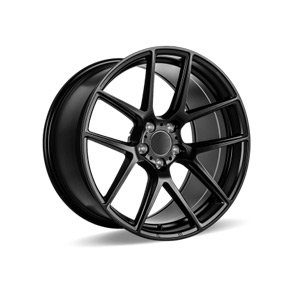Exploring the Mechanisms of Automatic Shift Linkage in Modern Vehicles
The Evolution and Benefits of Automatic Shift Linkage in Modern Vehicles
Automatic shift linkage systems represent a significant evolution in automotive technology. Over the years, as vehicles have become more sophisticated, so too have the mechanisms involved in their operation. Automatic shift linkage, in particular, has undergone substantial advancements, driven largely by the need for improved efficiency, safety, and user-friendliness.
Understanding Automatic Shift Linkage
At its core, the automatic shift linkage is a system that connects the gear shifter to the transmission of a vehicle, facilitating seamless gear changes without the driver needing to manually engage or disengage the clutch. This technology allows for a smooth transition between different driving modes, such as parking, neutral, and various drive gears. Unlike traditional manual systems, where the driver has complete control over gear selection, automatic shift linkages are designed to operate efficiently under varying driving conditions, thus enhancing the overall driving experience.
Historical Context
The journey towards automatic shift linkage began in the early 20th century with the introduction of automatic transmission systems. However, it wasn't until the late 20th century that the technology witnessed significant transformation. Initially, vehicles employed mechanical linkages that relied on cables and rods to connect the shifter to the transmission. These systems were often cumbersome, prone to wear and tear, and occasionally resulted in misalignment and transmission issues.
As automotive technology progressed, manufacturers began to introduce electronic and hydraulic systems, resulting in more precise control and improved responsiveness. Modern automatic shift linkage systems now incorporate advanced sensors and electronic controls, providing real-time feedback to the driver and the vehicle’s computer system. This allows for more efficient gear changes and enhances the overall performance of the vehicle.
Benefits of Automatic Shift Linkage
automatic shift linkage

One of the primary advantages of automatic shift linkage is the improved ease of use. Drivers no longer have to manage clutch engagement and gear selection manually, allowing them to focus more on the road. This is particularly beneficial in urban settings where stop-and-go traffic can be exhausting and stressful.
Additionally, automatic shift linkages contribute to enhanced safety features. Many systems are designed with fail-safes and redundancies that prevent erroneous gear engagement, which could lead to accidents. For example, modern vehicles often employ systems that ensure the car cannot be shifted into drive unless the brake pedal is depressed, reducing the risk of unintended movement.
Fuel efficiency is another critical area impacted by automatic shift linkage technology. Advanced systems can optimize gear changes based on driving conditions, ensuring that the engine operates within its most efficient range. This not only saves fuel but also reduces emissions, aligning with the growing emphasis on environmental responsibilities in the automotive industry.
Moreover, the introduction of hybrid and electric vehicles has pushed the boundaries of automatic shift linkage technology. These vehicles often utilize continuously variable transmissions (CVTs) or dual-clutch systems that require advanced automatic shift linkages to manage their unique powertrains effectively.
Future Outlook
The future of automatic shift linkage technology looks promising, with ongoing research and development aimed at enhancing the integration of electronic controls. As vehicles become increasingly connected, the potential for incorporating artificial intelligence and machine learning into gear-shifting algorithms could lead to even greater improvements in efficiency and performance. Future systems may even adapt to individual driving styles, learning from the driver’s habits to optimize shifts for comfort or efficiency, depending on the context.
In conclusion, automatic shift linkage represents a vital element of modern automotive engineering. The evolution from basic mechanical systems to sophisticated electronic linkages highlights the industry’s commitment to enhancing driver experience through technology. As advancements continue, the benefits of automatic shift linkage — including ease of use, improved safety, and enhanced fuel efficiency — will likely become even more pronounced, solidifying its importance in the future of transportation. With such developments on the horizon, the automotive landscape is set for a transformative shift, ensuring that the drivers of tomorrow are equipped with vehicles that prioritize safety, efficiency, and convenience.
-
Workings of Clutch Pipe and Hose SystemsNewsJun.04,2025
-
The Inner Workings of Hand Brake Cable SystemsNewsJun.04,2025
-
The Secrets of Throttle and Accelerator CablesNewsJun.04,2025
-
The Hidden Lifeline of Your Transmission Gear Shift CablesNewsJun.04,2025
-
Demystifying Gear Cables and Shift LinkagesNewsJun.04,2025
-
Decoding Clutch Line Systems A Comprehensive GuideNewsJun.04,2025
